|

|
|
|
| 1)
PLOT:
An idea will come to me from some sort of inspirational
source, this source varies from production to production.
Usually I will have an idea of what I want to do and then let
it subconsciously churn over in my mind for a week or two. I
will ponder it mentally for a while (sometimes a very long
time), and then I sit down and work out the basic plot of the
story. I find a beginning and an end, and then fill in the
rest. I think of jokes or events that I wish to include and
slot them in. This is the first draft of the plot and it can
change many times mentally, on paper or during the actual
shoot to present the finished product. I keep most of my notes
and the differences between versions are sometimes massive. I
work towards a script lasting 15min max, including titling and
credits. Any longer and it is harder to maintain the audiences
attention and also harder to find a competition or festival to
eagerly show your work. Make it short and to the point. Don’t
over do the subject matter. |
|

Back To Top
|
2)
BUDGET/SCHEDULE: I
consider a rough budget and shooting schedule to abide by. The film
has to be viable and able to be made. It is no use pipe dreaming
about an incredible movie that you want to make and then working out
that it is not possible. I try to stick to both of these
considerations. Try to get as much equipment free or second hand. If
you are after a certain item ask around and someone may have it
cheap or to give away. I always try to cut costs as much as I can
but without ruining the content of the film. Also I will accumulate
what I need for the movie as much as I can before I need it. I make
the shooting schedule fit in with everyone, including the cast and
myself. There is no rush to finish it, but I do find it important to
continue on with a steady pace. |
| 3)
CAST: I sit down and think whom I will approach for the cast.
I must consider any dangers, humiliation or risks involved. Some
people are not comfortable pretending to have sex with a pig or be
placed next to an special effects charge. I will not have an actor
doing any scene that I will not do myself. I use my friends in the
cast. These are the friends who I would ring first for help if a
woke up next to a dead hooker in a hotel room. I love getting
friends involved. You must have trust and reliability in your cast
and crew and they must expect the same form you. I would have
anybody in one of my films as long as they wanted to be there and
fitted what I need. I think everyone gets a thrill out of seeing
himself or herself on the big screen. |
| 4)
TRANSPORT:
It is no use planning to do a
30 man epic fight scene if you only have access to a single 4 seater
car and have to do 10 trips. You have to consider the load of
equipment and props that you need to carry also. In the final battle
scene in “UDDS Armageddon” I needed a van just to cart the props and
special effects. Organise the transport as early as you can before
the day of the shoot. |
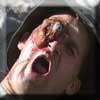
|
|
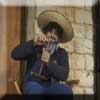
Back To Top
|
5)
LOCATION: A big problem is where! You
have to work out the location really early. If you cannot get a
location to suit, then the film itself may look very average. I
planned the whole end scene of Mixo Joe 4 around an old abandoned
house in the bush, but when I got there it was occupied! Another tip
is to look at the option of getting permission to film on private
property . I was once filming at my old work, which was a factory
site without permission when my boss walked in on three friends and
myself shooting Mixo Joe 4. He was a very understanding man
considering I was dressed in a pink rabbit suit and was fighting
Ninjas. Although I do continue to film on some locations without the
OK if I consider the shoot to be quick and trouble free. On location
keep it clean and respect it. I like using locations as real to the
movie as possible. The opening scene for “Dangerous Dan Jones” was
on the side of a cliff and fairly high up. What you see is real, the
height is real and sometimes the concentration and fear is also
real. |
| 6)
PROPS/COSTUME:
What props will you need? Props are a major consideration and cost.
I tend to buy props from bargain shops or markets, as they are
cheaper. I keep the props after the shoot in case they are needed
again. I also make as many props as I can. I have in the past
constructed a full sized battle tank from cardboard at home and a
huge rope bridge on site for a production. I gather materials from a
wide range of resources. Props can be time consuming to make and be
seen on the screen for only a very short time. In the film “I love
Ewe” the exploding sheep took me around 4 hours to make and 1 second
to blow up for an onscreen time of roughly 4 seconds! It was also
very expensive to make. Costume is also expensive. Op shops are a
good source along with bargain shops. Just make sure the costumes
you buy are for adults as I once purchased a super hero costume that
I could just get over my hips! |
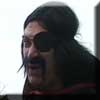
Back To Top
|
| 7)
SPECIAL EFFECTS:
I work out what sound
effects I need or will have to find. The Internet is an excellent
source for sound and hints on other effects. Soundtrack here is also
a consideration but is usually not an immediate concern. I have a
friend at the moment who is mixing original sound tracks for me to
avoid any copyright hassles. Any visual effects needed for the film
I work on, such as charges or weaponry you may have to construct
yourself. Remember to take spares with you in case an effect does
not work the first time or you are not happy with it. An example is
if you are doing a sword fight then bring at least three swords
instead of two. I was doing a sword fight down Melbourne once and
during the fight one of the swords broke and we did not have a
spare. The result was the other swordfighter having to pull out his
dagger and use that instead. In front of a live audience there is no
room for a director yelling out “CUT” . I also got hit in the head
that night with a flying Mars Bar from the crowd, but that is
another story. If any fight choreography is called for, then this is
also worked out before the actual day. It is no good shooting a film
around a scene that in the end cannot be shot itself due to
technical difficulties. Work around any problems you have and ask
people in the know. Experiment with camera angles and tight editing
to get around some problems. Importantly; remember safety as a number
one priority. Safety for your crew, actors and yourself. Test any
effects before hand. |
|
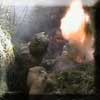
Back To Top
|
8)
THE SHOOT: Have all the cast, equipment,
transport and locations worked out well in advance so that on that
day you can travel quickly and smoothly. Make sure you have packed
your camera (I once forgot it) and that the batteries are charged.
Weather may be a concern but I try to shoot around it if need be. It
may be good to have an alternative scene to shoot in case of bad
weather, i.e. the indoor or undercover scenes. Have the day organised
shot by shot, make sure everyone is happy and occasionally take a
break. Have some sort of liquid refreshments there and a first aid
kit. Check each shot after it is shot, as it is a shame to return
home with a camera full of rubbish. Be prepared to improvise if you
have to and listen to the cast and crew for any ideas or advice.
Communication on the day is a key factor. |
| 9)
EDITING: This is a difficult one to answer,
but I will tell you how I do it. I edit on my PC at home. Editing is
very time consuming and always takes a lot more time than the actual
shoot itself. Sometimes there may easily be a factor of 10:1, that
is 10 hours editing to one hour filming. I first cut the scenes down
to a rough edit and then precisely cut them down to what I am happy
with. Sometimes I go back many times just to cut out a few frames or
apply some sort of video effect. Next I add in any additional sound
effects, titles and music. I then produce an output file and apply
any changes after that to produce the finished product. Sometimes
the output file may be produced many times before I am happy with
the
edit. |
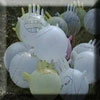
Back To Top
|
|
|
|
|
|
|
Return
to the Tips Page |
|
|
|
|
|